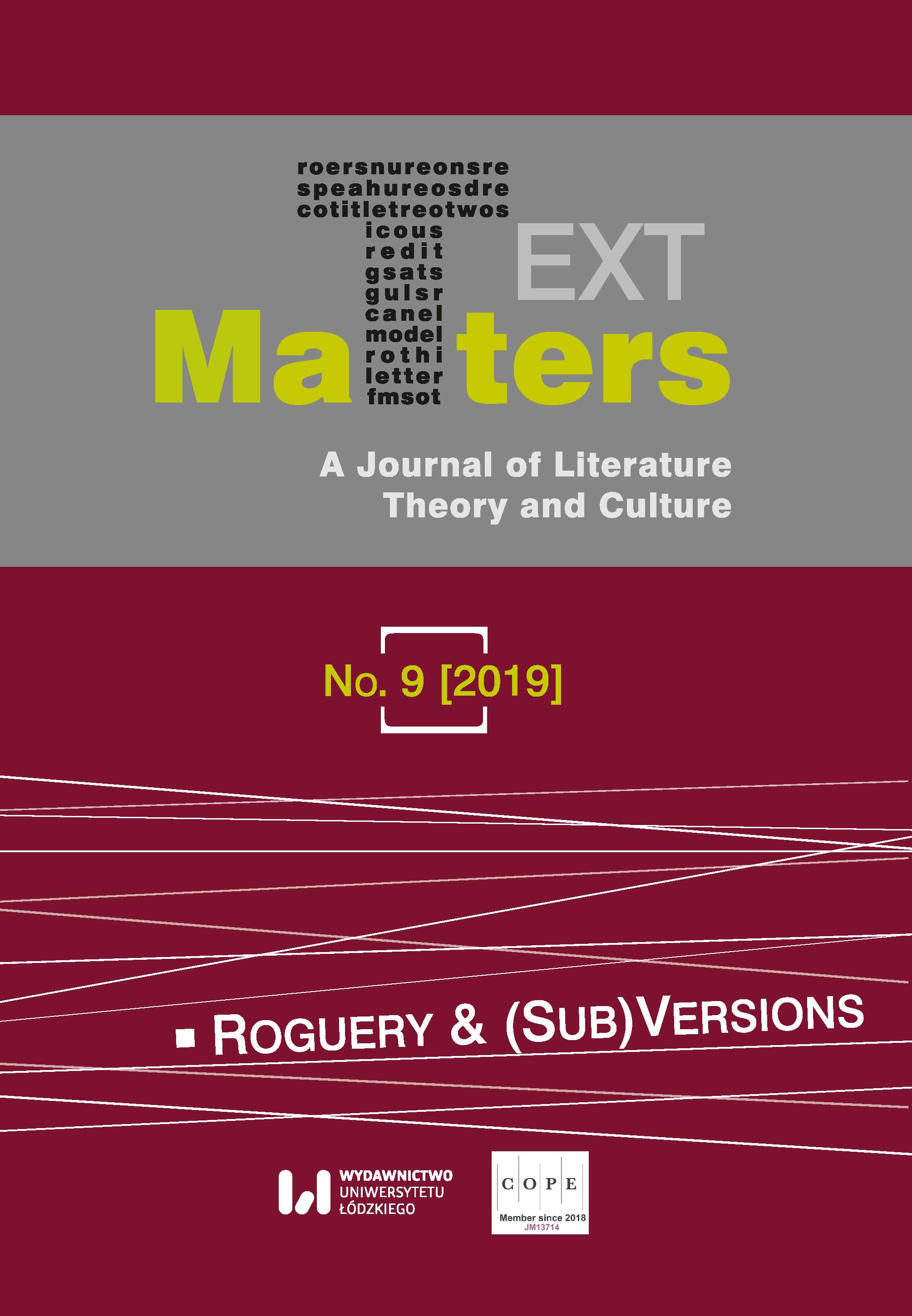Of Grim Witches and Showy Lady-Devils: Wealthy Women in Literature and Film
DOI:
https://doi.org/10.18778/2083-2931.09.03Keywords:
wealthy women, rich rogues, Cinderella, Miss Havisham, Cruella de VilAbstract
Imagining super rich women in the real and fictional world has long been a struggle. Those few depictions that do exist are scattered across time periods and literary genres, reflecting the legal restrictions that, at different points in time, would not allow women to accumulate assets independent of the patriarchal forces in their lives. The scarcity of extremely wealthy women in literature and film is confirmed by Forbes magazine’s list of the fifteen richest fictional characters that features forty different fictional men and only nine women, with never more than two female characters nominated in a single year.
This article explores the depiction of three exceptionally wealthy women: Cruella de Vil in The Hundred and One Dalmatians (1956) by Dodie Smith, Miss Havisham in Great Expectations (1861) by Charles Dickens, and the figure of the stepmother in various adaptations of “Cinderella.” I demonstrate how the protagonists’ wealth allows them to manipulate others and disconnect themselves from patriarchal and societal expectations. Further, I argue that these affluent antagonists are “rogued” by their respective narratives, highlighting their perceived anti-feminine and emasculating behaviour resulting in a mode of narration that greedily gazes at and shames their appearances and supposed unattractiveness. While this genealogy of rich rogues reiterates the narrow scope of imagining wealthy women on the page and on the screen, there are moments in the narratives that disrupt stereotypical depictions of these wealthy characters who defy the labels imposed on them.
Downloads
References
101 Dalmatians. Dir. Stephen Herek. Perf. Glenn Close, Jeff Daniels. Walt Disney Pictures, 1996. Film.
Google Scholar
Byrne, Eleanore, and Martin McQuillan. Introduction. Deconstructing Disney. Ed. Eleanore Byrne and Martin McQuillan. London: Pluto, 1999. 1–19. Print.
Google Scholar
Cinderella. Dir. Clyde Geronimi, Wildfred Jackson and Hamilton Luske. Walt Disney Pictures, 1950. Film.
Google Scholar
Cinderella. Dir. Kenneth Branagh. Perf. Cate Blanchett, Lily James. Walt Disney Pictures, 2015. Film.
Google Scholar
Ciugureanu, Adina. “The Victim-Aggressor Duality in Great Expectations.” Partial Answers 9.2 (2011): 347–61. Print.
Google Scholar
Cullen, Bonnie. “For Whom the Show Fits: Cinderella in the Hands of Victorian Illustrators and Writers.” The Lion and the Unicorn 27 (2003): 57–82. Print.
Google Scholar
Dickens, Charles. Great Expectations. Oxford: Oxford World’s Classics, 2008. Print.
Google Scholar
Dolan, Kerry A., and Louisa Kroll. “Billionaires 2019.” Forbes.com. Forbes Magazine 5 Mar. 2019. Web. 30 May 2019.
Google Scholar
Ewalt, David M. “The 2013 Forbes Fictional 15” Forbes.com. Forbes Magazine 16 Jun. 2014. Web. 20 Feb. 2018.
Google Scholar
Great Expectations. Dir. Brian Kirk. Perf. Gillian Anderson, Vanessa Kirby. BBC One, 2011. Film.
Google Scholar
Great Expectations. Dir. Mike Newell. Perf. Helena Bonham Carter, Jeremy Irvine. BBC Films, 2012. Film.
Google Scholar
Grimm Brothers. The Complete First Edition: The Original Folk & Fairy Tales of the Brothers Grimm. Trans. and ed. Jack Zipes. New Jersey: Princeton UP, 2014. Print.
Google Scholar
Hall, Donald E. Fixing Patriarchy: Feminism and Mid-Victorian Male Novelists. Basingstoke: Palgrave Macmillan, 1996. Print.
Google Scholar
Hartog, Curt. “The Rape of Miss Havisham.” Studies in the Novel 14.3 (1982): 248–65. Print.
Google Scholar
Howard, Carol. “Why Are There So Few Rich Fictional Women?” Forbes. com. Forbes Magazine 6 Apr. 2011. Web. 20 Feb. 2018.
Google Scholar
Levine, Caroline. “Realism as Self-Forgetfulness: Gender, Ethics, and Great Expectations.” Bloom’s Modern Critical Interpretations: Charles Dickens’s “Great Expectations.” Ed. Harold Bloom. New York: Blooms Literary Criticism, 2000. 99–113. Print.
Google Scholar
Lin Chang, Mariko. Shortchanged: Why Women Have Less Wealth and What Can Be Done About It. Oxford: Oxford UP, 2010. Print.
Google Scholar
Merkin, Daphne. “The Rich in Fiction.” Newyorker.com. The New Yorker 12 Sept. 2015. Web. 20 Feb. 2018.
Google Scholar
Noer, Michael. “Why So Few Women on the Forbes Fictional 15?” Forbes. com. Forbes Magazine 10 Mar. 2011. Web. 20 Feb. 2018.
Google Scholar
One Hundred and One Dalmatians. Dir. Wolfgang Reitherman, Clyde Geronimi and Hamilton Luske. Walt Disney Pictures, 1961. Film.
Google Scholar
Overall, Christine. A Feminist I: Reflections from Academia. Peterborough: Broadview, 1998. Print.
Google Scholar
Perrault, Charles. The Complete Fairy Tales by Charles Perrault. Trans. Christopher Betts. Oxford: Oxford UP, 2009. Print.
Google Scholar
Putnam, Amanda. “Mean Ladies: Transgendered Villains in Disney Films.” Diversity in Disney Films: Critical Essays on Race, Ethnicity, Gender, Sexuality and Disability. Ed. Johnson Cheu. Jefferson: McFarland, 2013. 147–62. Print.
Google Scholar
Scott, Bartie. “The Richest Self-Made Women In The World 2016.” Forbes. com. Forbes 2 Mar. 2016. Web. 20 Feb. 2018.
Google Scholar
Smith, Dodie. The Hundred and One Dalmatians. London: Puffin, 2002. Print.
Google Scholar
Stevenson, Karen. “Hairy Business: Organising the Gendered Self.” Contested Bodies. Ed. Ruth Holliday and John Hassard. London: Routledge, 2001. 137–52. Print.
Google Scholar
Thornton, Sara. “The Burning of Miss Havisham: Dickens, Fire and the ‘Fire Baptism.’” Bloom’s Modern Critical Interpretations: Charles Dickens’s “Great Expectations.” Ed. Harold Bloom. New York: Blooms Literary Criticism, 2000. 79–98. Print.
Google Scholar
Walsh, Susan. “Bodies of Capital: Great Expectations and the Climacteric Economy.” Victorian Studies (1993): 73–98. Print.
Google Scholar
Downloads
Published
How to Cite
Issue
Section
License

This work is licensed under a Creative Commons Attribution-NonCommercial-NoDerivatives 4.0 International License.













